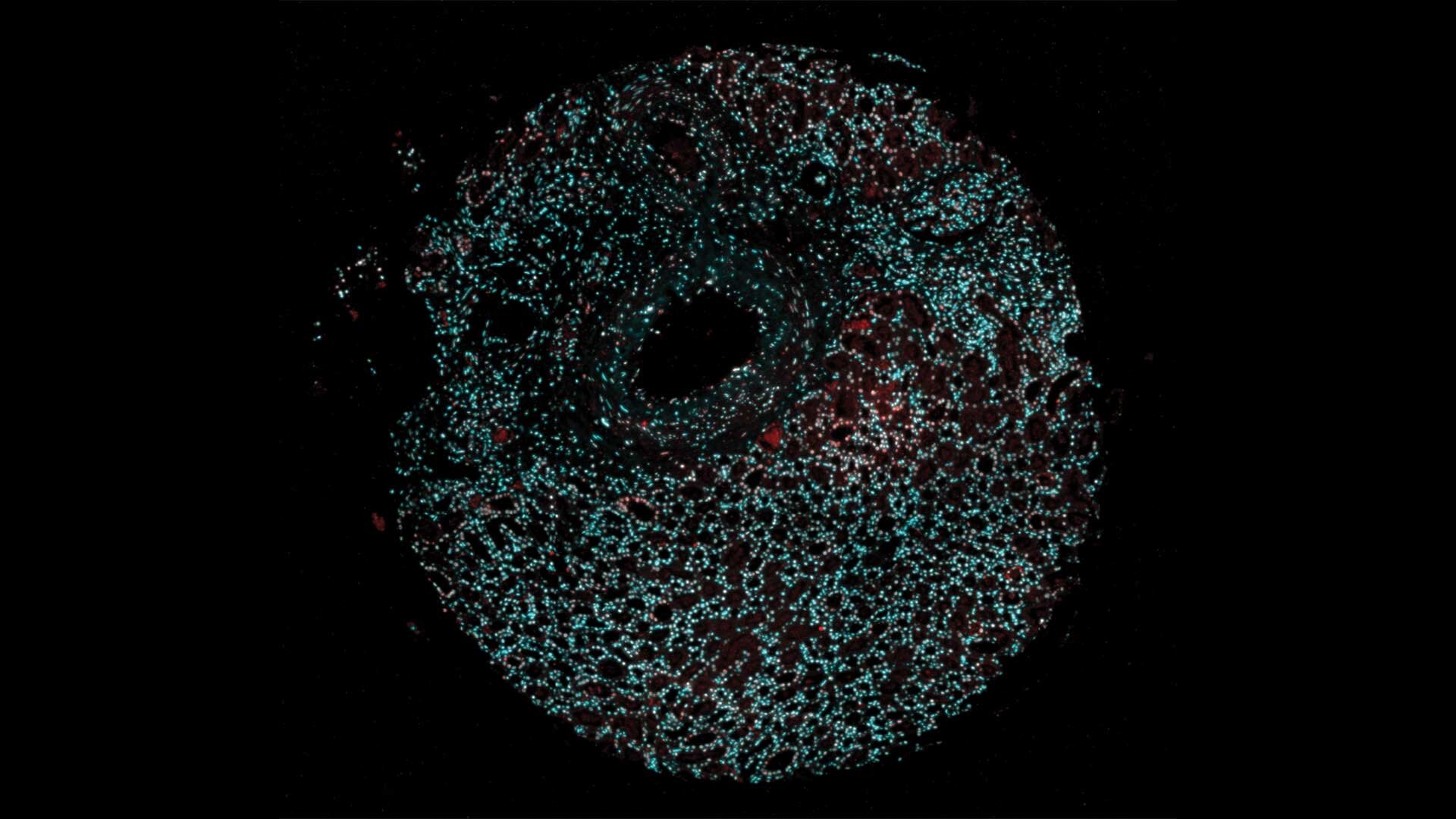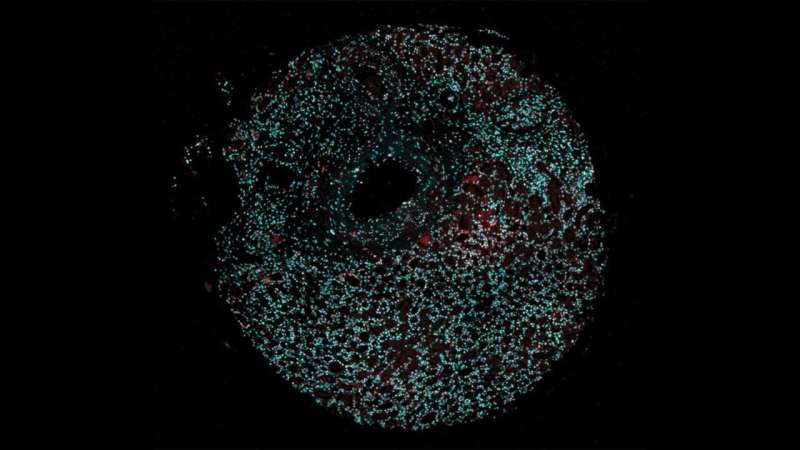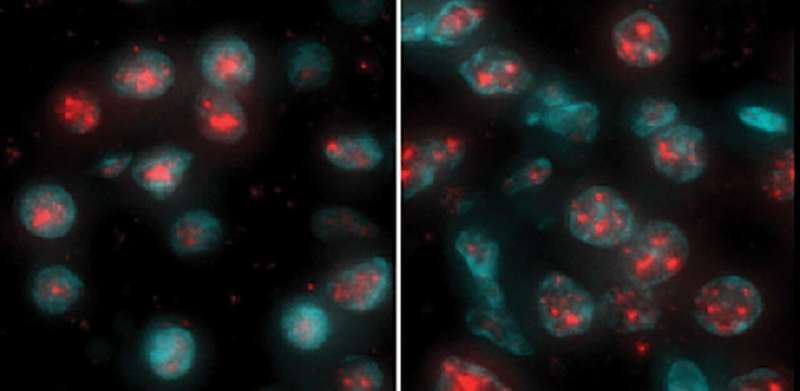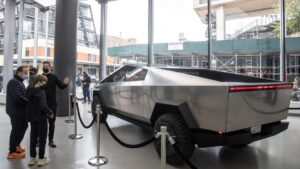

Fighting cancer can seem like a deadly game of chance. While some patients may respond well to certain treatments, others might not be as fortunate. Doctors and scientists have long struggled to explain why. Now, Cold Spring Harbor Laboratory (CSHL) Assistant Professor Katherine Alexander and University of Pennsylvania Professor Shelley Berger have found a possible source of this variability in clear cell renal cell carcinoma (ccRCC)—the most common kidney cancer diagnosed in adults.
Alexander has identified two different patterns of cellular structures known as nuclear speckles in kidney tumors. Even more exciting, Alexander’s research, conducted in Berger’s lab at the University of Pennsylvania, shows a potential correlation between speckle patterns and patient outcomes.
“We found that different therapies are more or less effective depending on how the speckles look. This means potentially if a patient comes in with a normal or aberrant speckle state, they might be more responsive to one drug or another. Of course, more research needs to be done,” explains Alexander.
Discovered over 100 years ago, nuclear speckles are tiny cellular structures that reside in the nucleus. Here, they’re thought to intermingle with DNA and help regulate gene activity. Alexander’s research reveals that nuclear speckles have two different signatures in ccRCC: normal-like and aberrant. It’s a matter of positioning. Normal-like speckles tend to congregate toward the center of the nucleus. Aberrant speckles are more dispersed.

“How these signatures affect patient outcomes remains a mystery for now,” Berger says. “However, the search for answers may lead to more personalized treatments. This discovery offers a new starting point in ccRCC.”
“It’s the first suggestion that this would be potentially applicable to giving someone [diagnosed with ccRCC] one drug or another. That’s huge because cancer therapy has a lot of horrible side effects. To be able to tell a patient, ‘Your tumor looks like this, so we think this drug will work better than this drug,’ is something we really need,” Alexander adds.
The team didn’t just look at kidney cancer. They analyzed speckles in over 20 different types of cancers, from melanomas to breast cancer. However, only ccRCC showed a correlation between speckle patterns and patient outcomes. What makes this cancer special? Alexander’s findings point to HIF-2𝛼, a protein typically overactive in ccRCC. The Alexander lab aims to pursue this lead alongside other researchers at CSHL’s Cancer Center.
For now, Alexander continues to investigate the mystery of nuclear speckles’ role in cancer. Though she’s in uncharted territory, the object of her search is clear. Her work seeks to help stack the odds in cancer patients’ favor.
More information:
Nuclear speckles regulate functional programs in cancer, Nature Cell Biology (2025). DOI: 10.1038/s41556-024-01570-0
Citation:
Researchers find potential link between nuclear speckles patterns and cancer treatment outcomes (2025, January 2)
retrieved 2 January 2025
from https://medicalxpress.com/news/2025-01-potential-link-nuclear-speckles-patterns.html
This document is subject to copyright. Apart from any fair dealing for the purpose of private study or research, no
part may be reproduced without the written permission. The content is provided for information purposes only.



